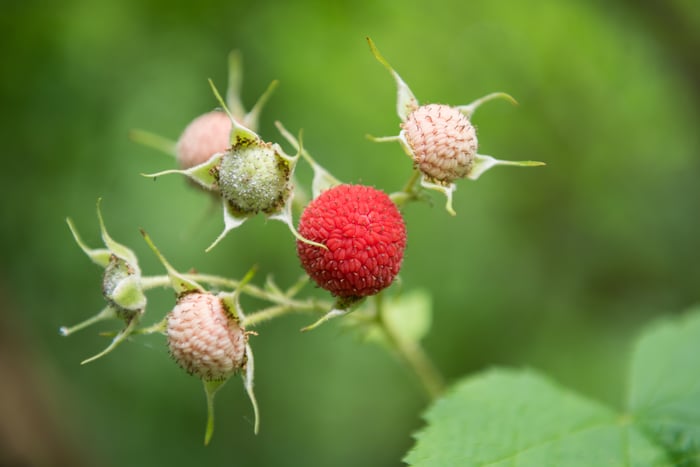Colorado’s residents and visitors are usually drawn to the Rocky Mountains for its fun outdoor sports, such as: mountain biking, skiing, rock climbing, and more. But there's a calmer type of fun that involves meandering through the beautiful landscapes of the Rockies looking for tasty treats.
Foraging, a slow paced activity that can have high reward but can be just as risky as soloing the side of a mountain, is a practice enjoyed by many. Colorado has a long history of hunting and gathering: the First peoples relied on summer foraging for nutrition and medicine.
If you plan on entering the foraging world, it’s important to do your research and play your part. Hot spots have been hit hard the last few years and there are a lot of social trails and over-foraging as a result, leaving areas bare for wildlife. This summer, in particular, there are not many berries at high elevations for the bears that require them to fatten up for winter. One way you can address these issues is by trying just a snack. An act as small as this can make a big difference.

The Thimbleberry in Colorado
A raspberry look alike, thimbleberries enchant the forests with their bright red berries in late summer. A thimbleberry’s core is hollow, making the berries easy to fit on the tip of a finger like a thimble. The berries are high in vitamin A and C which boost the immune system. Additionally, the leaves and roots can be made into a tea which was used to treat nausea, vomiting, and diarrhea. The berries are a tasty yet delicate snack, so you won’t find this jam in stores. They are best enjoyed by plucking one or two straight from the plant!


The Sego Lily in Colorado
The sego lily, also known as a mariposa lily, resembles a wild tulip tucked away among the wildflower meadows. Their unique petals are white with a splash of yellow and are marked with a crescent-shaped purple band that helps them stick out from the crowd. This lily is not just a beautiful staple of Colorado’s wildflower season; some Native peoples used to rely on them for food. The sweet bulb is the size of a walnut and similar to a potato when boiled. The root of the sego lily can be ground to make bread from the starchy meal.

Mountain Bluebells in Colorado
Mountain bluebells can be found in subalpine meadows and alongside moist creek-sides. The plant spreads through rhizomes in large clusters with tubular flowers that start off as blue and fade to pink with age. Both the flower and leaves are edible, but beware, there is a long debate whether the taste leaves you with a refreshing cucumber or a dead fish taste! In addition to being a tasty snack (for some), the plant was also used by Native peoples to increase the milk flow of nursing mothers. In addition, they made a tea of the powdered root and used it to relieve the itching caused by smallpox and measles.
These are just a few of the many edible delights found in the Rocky Mountains. Although there are many wild edible plants in the mountains, it is important to recognize the risk that comes along with foraging. Any person who puts themselves in contact with or ingests wild plants or mushrooms must be certain of its identity and understand that there’s a risk of allergy or illness with any new food. If you are interested in knowing more about foraging in Colorado, stop by any Walking Mountains nature center to speak with a Naturalist or purchase a guide. Happy foraging!
Kaylyn Murphy is a Foley Graduate Fellow at Walking Mountains Science Center who enjoys searching for mushrooms and other yummy plants in the mountains of Colorado.








